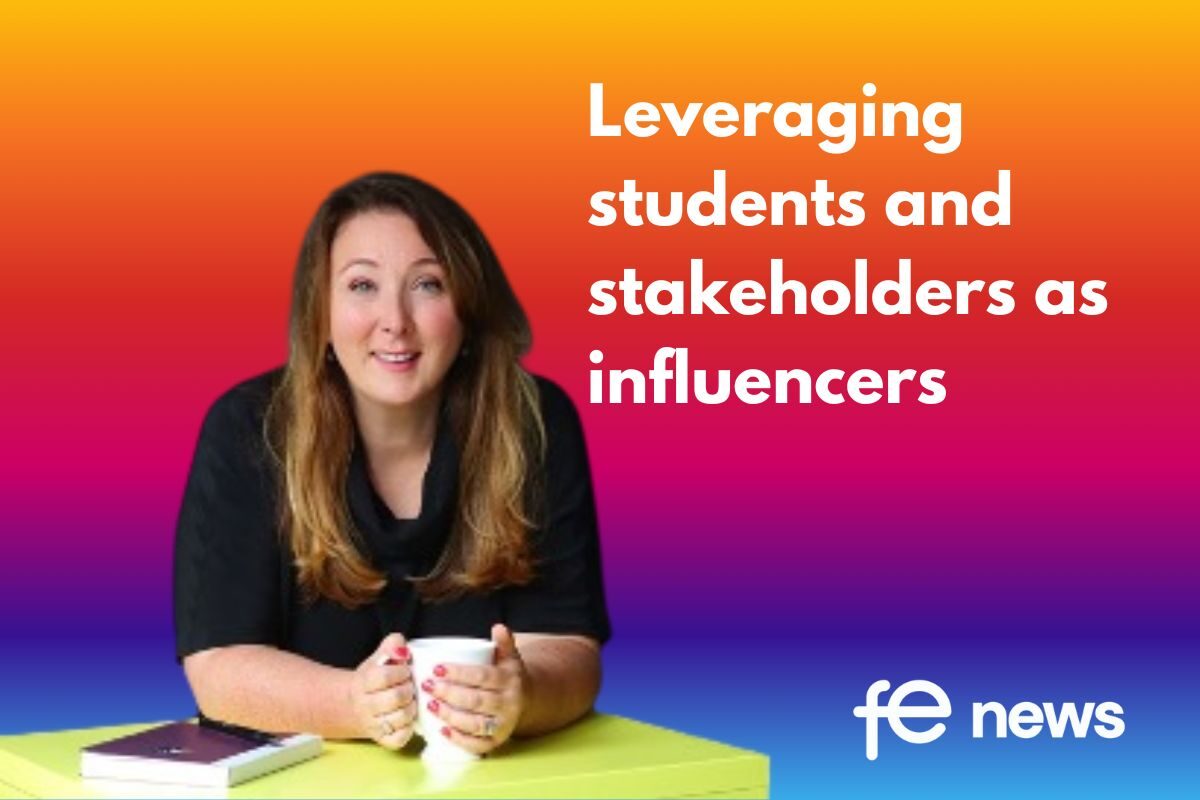Leveraging students and stakeholders as influencers

There’s no substitute for people power and that means education institutions are in a great position to harness their best assets.
Blessed with a rich variety of people from managers, teachers, students and stakeholders with all sorts of social and professional backgrounds, their stories really count.
Whilst the leadership team and senior teaching staff play a huge role in strengthening the position of the school, college or university, it is also important to leverage stakeholders as they can be a real asset to your marketing strategy.
Student engagement
Influencers play an important role in marketing strategies. Students are at the very heart of everything that schools, colleges or universities do and they can also be at the heart of authentic content creation as well. Your students could be your biggest advocates.
Students can and should lead the way when it comes to social media marketing. They have the power to engage prospects and stakeholders through popular social media platforms such as Instagram and TikTok with their own musings and fun-filled videos which illustrate the student experience.
They will be key to helping attract new intakes because they’re on the same wavelength as other would-be students.
Their voice can convey content in a way that’s authentic and enable you to target customers and online communities and boost blogger engagement.
Stakeholder engagement
While the presence of students is obvious, every educational institution also has various stakeholders. These are individuals, groups or other organisations with a vested interest in its progress. They can also be authors of valuable insights which will invigorate social media marketing due to their quasi-independent position.
A structured and coherent approach will enable you to develop strong relationships, engage stakeholders and empower students to build a connected network of positive voices from an early stage.
There are several ways of working with stakeholders and students and these include:
Student ambassador programmes
To be used to train students to promote and share positive experiences with peers and potential students to develop relationships with opinion leaders and also reach beyond traditional media.
Social media campaigns
These can be used to encourage students and stakeholders as social media users and enlist them as content contributors who share and promote the school or institution on their personal digital platforms with their own social media posts.
Referral programmes
They can offer incentives for current students and stakeholders to refer prospective students through, for example, online communities and social networking sites.
Student testimonials
Gather and showcase student success stories, in-depth interviews and testimonials on the school’s website. Establish them as online opinion leaders and the authors of authentic marketing materials.
Stakeholder advisory bodies
Councils of stakeholders can unite to provide feedback, offer suggestions on the engagement process, help create content – including blogger communication – and make a contribution to promote your organisation to members of your target audience through social media marketing.
Event participation
The frontline involvement of students and stakeholders in a communication venue, such as open days, awards ceremonies, parents’ evenings, graduation ceremonies, and other special events, can be a valuable exercise.
They can help you set a tone which will help make a lasting impression on your target audience either in person live or via social media influencers if they are taking part in the webinars and interactive marketing events.
Collaborative projects
Partnerships with local businesses and organisations can create projects that benefit both the school and the community, increasing the visibility and reputation of the school with your target market.
If done correctly, students and engaging stakeholders can provide a competitive advantage and will boost long-term relationship building but it should be noted that there are associated risks which is understandable given the nuances of human behaviour.
To maximise and organise social interaction while exerting some measure of creative control, it is worth investing in software to coordinate student and stakeholder activity across public social media channels and even offer imagery and guidance on key topics.
Creative control
While students and stakeholders can be important allies with regard to communication, it is important to be sensible.
That means that you do not give them the keys to the castle and safeguards need to be put in place as you need to exert a significant degree of creative control to protect your brand identity and strengthen digital integration and customer engagement.
Vetting
There should be vetting procedures, clear blogger selection criteria, training sessions and workshops on what to say and what not to say, and a literature review are examples of what should form part of student and stakeholder management and content creation strategies.
This should cover dealing with the media so that you can direct responses from your communications team. It should also cover blogger engagement and influencer campaigns.
Outside help
It pays to summon external support because they can do the heavy lifting due to their experience of the full marketing cycle.
These can range from leading on consumer research to providing insight on which bloggers, media and influencers to connect with to a full content management campaign.
Project management
When you want to win friends and influence people on particular projects such as a recruitment campaign, key planning application or a bid for public funding, then stakeholder engagement and student support can be the difference between success and failure.
It is important to work with project managers when creating your content. It is also useful to link up with them to identify any other stakeholders beyond established partners.
The two-step flow theory
Students and stakeholders should be regarded as important allies, because, according to the two-step flow theory of communication the majority of people develop opinions because of thought leaders whose thinking is influenced by the mass media.
Conclusion
If you want to take brand communication to the next level than make sure you harness the power of your stakeholders, project managers and students.
Bringing them in to play an active role in your influencer marketing strategy will allow you to create a deeper connection with your target audience.
By Lis Anderson, director, AMBITIOUS PR











Responses